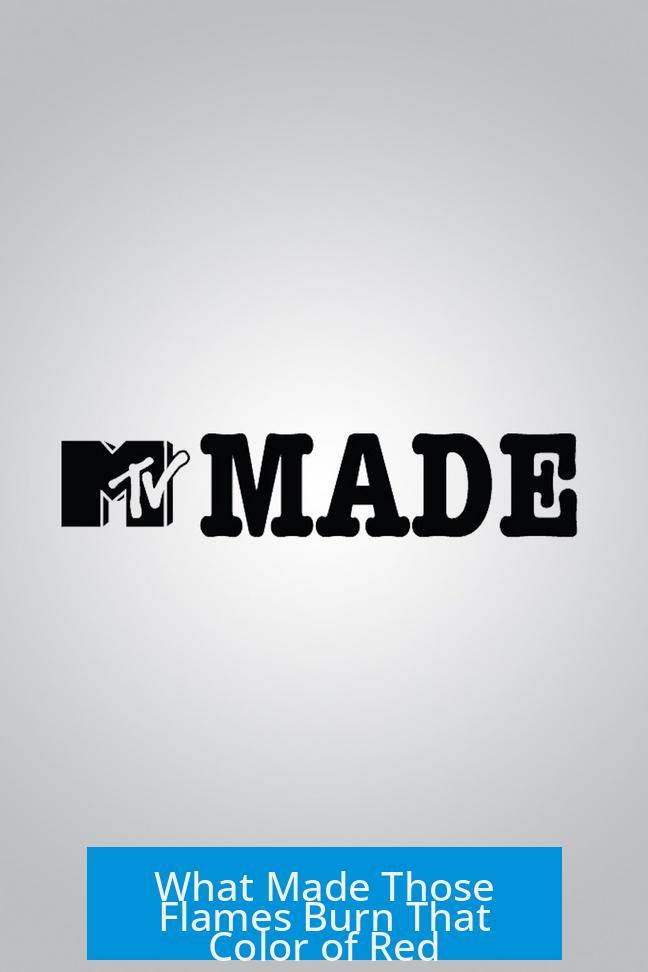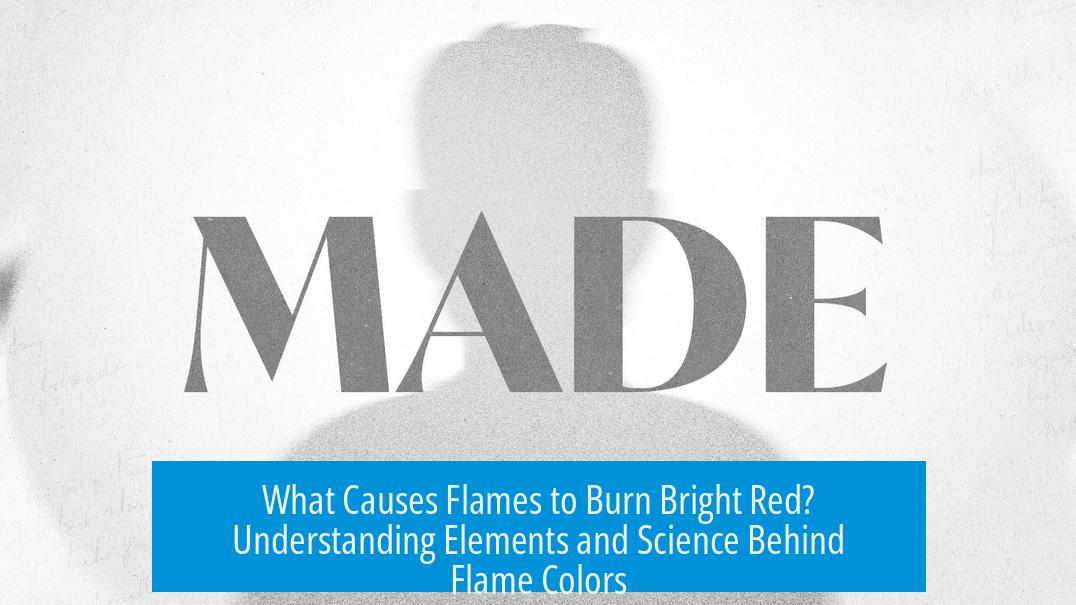What Made Those Flames Burn That Color of Red?

The red color in flames primarily arises from the presence of specific elements such as strontium and lithium. These elements emit characteristic hues due to electron transitions when heated, creating the distinct red flames observed in many chemical and pyrotechnic contexts.
Elements Responsible for Red Flame Color
The red hue in flames commonly results from certain metallic salts that produce specific wavelengths of light when heated. The two most prevalent contributors are strontium and lithium compounds.
Strontium
- Strontium salts, especially strontium chloride (SrCl2), are widely used to produce deep red colors in flames.
- Strontium is favored for its vivid red emission, relative affordability, and lower toxicity compared to alternatives.
- Pyrotechnics often use strontium compounds to achieve reliable red coloration.
- The flame from strontium can appear very intense and dominates many fireworks displays.
Lithium
- Lithium compounds also emit strong red or crimson flames upon combustion.
- Though effective, lithium salts are less commonly used due to higher cost or sourcing concerns.
- Experiments in general chemistry labs demonstrate that lithium generates flames similar in color to strontium.
- Lithium chloride is among the compounds that can create this coloration.
- Sometimes mixtures of lithium and strontium salts are employed to enhance or modify the shade of red.
Other Potential Contributors
Other elements and compounds can theoretically produce red or reddish flames, but they are usually less common or practical for typical flame coloration.
- Calcium chloride (CaCl2) and barium chloride (BaCl2) can influence flame color, but typically yield orange or green hues rather than pure red.
- Copper and sulfur combinations may yield colored flames but usually lean toward green or blue shades.
- Elements such as rubidium, zirconium, mercury, and phosphorus have been noted for flame coloration effects but are rarely used due to cost, toxicity, or unstable behavior.
Scientific Basis for Flame Color
The red flame color originates from electronic transitions in atoms or ions. When heat excites the electrons in these elements, the electrons jump to higher energy levels.
When these electrons fall back to lower energy levels, they emit photons with wavelengths corresponding to specific colors.
For strontium and lithium, the energy difference of these levels leads to the emission of light primarily in the red portion of the visible spectrum.
Alternative Explanations for the Observed Red Flames
Hydrogen Flame Hypothesis
Some suggest that the observed red flames might arise from burning hydrogen gas or hydrogen leaks ignited at release valves.
- Pure hydrogen flames usually appear nearly invisible or pale blue, so red flames directly from hydrogen combustion are unusual.
- The red appearance may result from impurities or additives mixed into the hydrogen to increase visibility or safety.
- Another possibility is the camera capturing the flames with infrared sensitivity, recording heat emissions as visible red light.
- Captured imagery of hydrogen flames at relief valves sometimes show red hues, but this could be from contaminants, impure gas, or imaging variables.
Camera and Visual Effects
Photography and videography can alter the perceived flame color.
- Digital cameras may apply filters or have sensor sensitivities that capture infrared or near-infrared light as red.
- Environmental factors such as steam or ambient lighting may create visual illusions of vivid coloration.
- Light-emitting diodes (LEDs) or other lighting sources sometimes blend with flame footage, enhancing or biasing color perception.
CGI and Visual Performance Hypotheses
Some theories speculate that flames may be artificially colored through computer-generated imagery.
However, the presence of strontium chloride and other chemicals known to produce red flames disputes this notion in many practical cases.
Summary Table: Elements and Flame Colors
| Element/Compound | Common Flame Color | Notes |
|---|---|---|
| Strontium chloride (SrCl2) | Deep red | Common in pyrotechnics; stable and cost-effective |
| Lithium chloride (LiCl) | Crimson red | Sometimes mixed with strontium; effective but costly |
| Calcium chloride (CaCl2) | Orange-red | Less vivid than strontium; minor role in coloration |
| Barium chloride (BaCl2) | Greenish | Not typically associated with red flames |
| Hydrogen gas (H2) | Almost invisible or pale blue | Red may appear due to additives or camera effects |
Practical Applications and Observations
Fireworks makers rely heavily on strontium salts to generate red flames reliably.
Laboratory flame tests often use lithium compounds to teach flame coloration principles.
While hydrogen can produce flames, its natural color is not red without enhancements.
Camera settings, film filters, and environmental factors can enhance or distort perceived colors in flame imagery.
Conclusion: Clarifying the Source of Red Flame Color
- Deep red flames most commonly arise from strontium salts, especially strontium chloride.
- Lithium salts also produce red flames but see less usage due to costs.
- Hydrogen flames alone rarely appear red; redness often indicates additives or imaging phenomena.
- Scientific explanation hinges on electronic excitation and photon emission at characteristic wavelengths.
- Camera and visual effects can confuse true flame color with artifacts or enhancements.
Key Takeaways
- Strontium and lithium salts are the primary chemical sources of red flame coloration.
- Electron transitions in these elements emit red light visible to the human eye.
- Hydrogen flames are naturally nearly colorless but can appear red due to impurities or camera effects.
- Fireworks manufacturers prefer strontium compounds for cost and safety.
- Visual recordings of flames may not represent true flame color due to digital capture nuances.





Leave a Comment